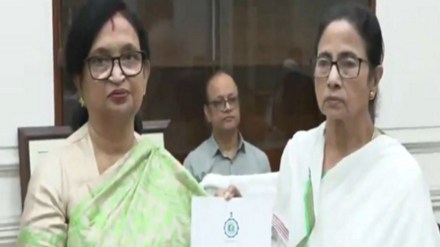The West Bengal government’s budget proposals for the 2025-26 fiscal signal a clear focus on the upcoming state elections, experts say. The budget, presented in the state assembly on Wednesday, by West Bengal finance minister Chandrima Bhattacharya, outlines a sharp increase in revenue expenditure alongside a relatively modest rise in capital outlay.
The budget allocates over Rs 30,000 crore more under revenue expenditure compared to the revised estimates for 2024-25, while capital outlay sees a much smaller increase of less than Rs 12,000 crore. Revenue expenditures cover short-term operational costs such as salaries, overheads, and welfare schemes, whereas capital expenditures (capex) fund long-term asset creation meant to generate revenue over time.
Figures from the budget show that the state government raised its revenue expenditure estimate for the current fiscal by Rs 2,600 crore but simultaneously slashed capital expenditure by nearly Rs 7,000 crore. For the upcoming year, revenue expenditure is set at Rs 3.01 lakh crore—an 11.27% rise from the current estimate—of which nearly Rs 1.6 lakh crore is earmarked under the Social Services category.
This budget, the last full-fledged one before the 2026 Assembly elections, places significant emphasis on social welfare. Finance Minister Chandrima Bhattacharya presented a Rs 3.89 lakh crore budget, announcing a 4% hike in dearness allowance (DA) for state government employees. Among the key allocations under Social Services, the largest funds are directed towards welfare programs for SC, ST, OBC communities, as well as social welfare, nutrition, education, sports, arts, and culture.
For capital expenditure, the government has proposed Rs 72,818.72 crore for 2025-26, an increase of Rs 11,826.62 crore from the current fiscal. Of this, Rs 19,724.72 crore falls under the Social Services category. Notably, the state’s rural housing scheme, ‘Banglar Bari,’ is among the top priorities. Bhattacharya announced that Rs 14,000 crore has already been set aside for 12 lakh beneficiaries, with an additional Rs 9,600 crore allocated to cover 16 lakh more families in the second phase, providing them with Rs 60,000 each by December 2025.
A key measure of a state’s fiscal health is the proportion of capital outlay to its Gross State Domestic Product (GSDP). According to Reserve Bank of India data on state-wise capital expenditure for 2023-24, West Bengal ranked 11th among 15 major states, with a total outlay of Rs 65,601 crore. The top three states in capital spending were Uttar Pradesh (Rs 1,77,888 crore), Maharashtra (Rs 1,36,333 crore), and Tamil Nadu (Rs 1,01,091 crore).
Economist Prasenjit Bose highlighted significant discrepancies in the state’s growth projections. The government had initially estimated a GSDP growth rate of 7.65% for 2024-25 but later revised it down to 6.09%, raising concerns about the accuracy of its fiscal indicators. The 2025-26 growth estimate stands at 6.8%, but Bose suggested it might also be revised downward.
The state’s mid-term fiscal policy statement shows a concerning trend in debt levels. While the budget estimated debt at 36.88% of GSDP for 2024-25, a revision pushed it up to 38.93%. Bose argued that this two-percentage-point rise indicates a lack of fiscal transparency, suggesting that electoral considerations are taking precedence over economic prudence.
On Wednesday, Amit Mitra, principal chief advisor to Chief Minister Mamata Banerjee, stated that West Bengal’s nominal GDP is expected to grow by 11.94% in 2025-26, with development expenditure rising by 16.17% and capital expenditure by 10.7%. However, the state’s outstanding debt projection for 2025-26 has climbed to Rs 7,71,670.41 crore—an increase of over Rs 65,000 crore from the current year—while loan repayments are expected to cost over Rs 81,000 crore.
With inputs from PTI
